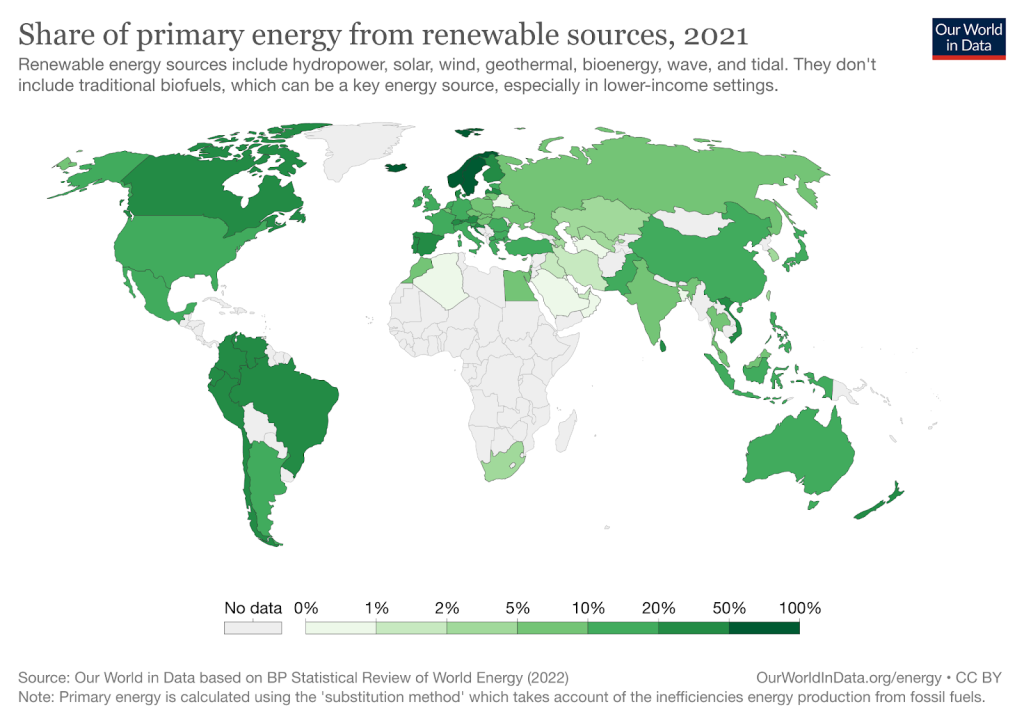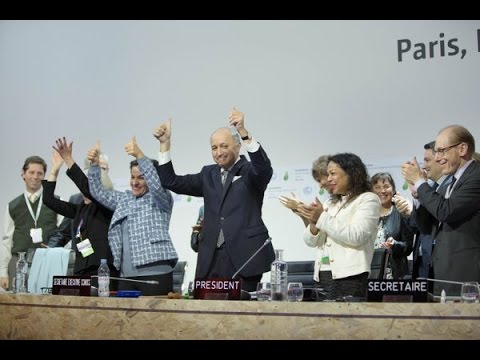The History of Sustainable Energy: The Big Picture
Affiliate Disclosure
Hey fellow impactful ninja ?
You may have noticed that Impactful Ninja is all about providing helpful information to make a positive impact on the world and society. And that we love to link back to where we found all the information for each of our posts.
Most of these links are informational-based for you to check out their primary sources with one click.
But some of these links are so-called "affiliate links" to products that we recommend.
Why do we add these product links?
First and foremost, because we believe that they add value to you. For example, when we wrote a post about the environmental impact of long showers, we came across an EPA recommendation to use WaterSense showerheads. So we linked to where you can find them. Or, for many of our posts, we also link to our favorite books on that topic so that you can get a much more holistic overview than one single blog post could provide.
And when there is an affiliate program for these products, we sign up for it. For example, as Amazon Associates, we earn from qualifying purchases.
What do these affiliate links mean for you?
First, and most importantly, we still only recommend products that we believe add value for you.
When you buy something through one of our affiliate links, we may earn a small commission - but at no additional costs to you.
And when you buy something through a link that is not an affiliate link, we won’t receive any commission but we’ll still be happy to have helped you.
What do these affiliate links mean for us?
When we find products that we believe add value to you and the seller has an affiliate program, we sign up for it.
When you buy something through one of our affiliate links, we may earn a small commission (at no extra costs to you).
And at this point in time, all money is reinvested in sharing the most helpful content with you. This includes all operating costs for running this site and the content creation itself.
What does this mean for me personally?
You may have noticed by the way Impactful Ninja is operated that money is not the driving factor behind it. It is a passion project of mine and I love to share helpful information with you to make a positive impact on the world and society. However, it's a project in that I invest a lot of time and also quite some money.
Eventually, my dream is to one day turn this passion project into my full-time job and provide even more helpful information. But that's still a long time to go.
Stay impactful,
Sustainable energy sources are in infinite supply and produce less carbon dioxide (CO2) emissions than traditional fossil fuels. They have come to represent a larger share of the global energy market as we look to transition away from fossil fuels. So we had to ask: What is the history of sustainable energy?
Sustainable energy began thousands of years ago via harnessing energy from the sun, wind, water, the earth’s heat, tides, and waves. Theoretical and experimental validation of sustainable energy mechanisms, followed by the invention of sustainable energy technologies, have shaped the modern market.
Keep reading to learn how sustainable energy came to be, who and what pioneered its development, how effective it has been thus far, and what the future of sustainable energy could entail.
Here’s the History of Sustainable Energy in a Nutshell
Sustainable energy sources are energy substitutes for fossil fuels (e.g., coal, oil, natural gas) that can reduce the effects of global warming by limiting global greenhouse gas (GHG) emissions. They meet the needs of our current generation without compromising the ability of future generations to meet their own needs.
“Sustainable: The ability to be maintained at a certain rate or level | Avoidance of the depletion of natural resources in order to maintain an ecological balance”
Oxford Dictionary
The 6 types of sustainable energy are solar, wind, hydropower (micro/low), geothermal, tidal, and wave energy.
Sustainable energy has gone through three distinct development phases in its development:
- Early market formation and innovation: The early history of sustainable energy dates back thousands of years with primitive methods of harnessing the sun, wind, water, heat from the earth’s core, tides, and waves. Scientific advances between 1800-1900 paved the way for the development of modern sustainable energy technologies
- Consolidation and strengthening: Theoretical and experimental validation of sustainable energy mechanisms, followed by the invention of solar panels, wind turbines, hydroelectric facilities, geothermal plants, tidal facilities, and wave converters helped to shape the sustainable energy market.
- Mainstreaming: Sustainable energy began to establish itself as a part of the mainstream electricity industry in the 1900s with the opening of the first commercial power plants and rapid scaling of the technology. The establishment of the International Energy Agency (IEA), the International Renewable Energy Agency (IRENA), and the Paris Climate Agreement helped to regulate the sustainable energy market.
| Sustainable Energy Milestones | Historical Event |
| Initial start | The early history of sustainable energy dates back thousands of years with primitive methods of harnessing the sun, wind, water, heat from the earth’s core, tides, and waves. Scientific advances between 1800-1900 paved the way for the development of modern sustainable energy technologies. |
| Milestones in sustainable energy development | 1771: Richard Arkwright invented the water frame, a water-powered machine to spur the Industrial Revolution. 1827: Benoit Fourneyron invented the first water turbine. 1849: James Francis invented the Francis turbine, which is still the most commonly used one today. 1878: The world’s first hydroelectric project was established. 1882: The world’s first hydroelectric power plant was constructed. 1883: The first photoelectric (solar) cell was invented. 1887: The first wind turbine for electricity generation was developed. 1895: The largest and first alternating current electricity-generating hydropower plant was constructed. 1904: Piero Ginori Conti became the first to use geothermal energy to power a small generator. 1910: Busso Belasek developed the first artificial wave machine. 1910: Bochaux Praceique developed the first oscillating water column for wave energy, which is a design still used today. 1913: The world’s first commercial, dry steam geothermal power plant was constructed in Italy. 1920s: The first vertical axis wind turbine was developed. 1920: Dexter Cooper came up with the idea of harnessing power from tides. 1941: The first megawatt (MW) wind turbine was constructed and connected to the US power grid. 1948: The world’s first commercial geothermal heat pump became operational. This pioneered the large-scale commercial application of heat pumps. 1954: The first silicon solar cell was invented. 1966: The La Rance Tidal Power Station was opened in France, the first tidal power plant in the world. 1967: The world’s first geothermal, binary cycle power plant became operational in Russia. 1980: The world’s first onshore wind farm was constructed in New Hampshire (US). 1991: The world’s first offshore wind farm, the Vindeby Wind Farm, was constructed in Denmark. 2003: The European Marine Energy Centre (EMEC) was established as the world’s first commercial, open-sea testing facility for wave and tidal energy technologies. 2007: The world’s first tidal turbine system was constructed at Strangford Lough in Northern Ireland. 2008: The world’s first operational wave power system, the Aguçadora wave farm, was opened in Portugal. 2011: The Sihwa Lake Tidal Power Station, the largest operational tidal power plant in the world, was opened in South Korea. 2023: CorPower Ocean installed CorPower C4, the first commercial-scale wave energy converter. |
| Current status | Currently, 14% of our primary energy consumption (heating, transportation, and electricity) currently comes from renewable energy technologies. Hydropower accounts for the majority of sustainable electricity generation at roughly 51%, followed by wind at 25% and solar at 15%. |
| Future outlook | The future of sustainable energy will be heavily influenced by ambitious government targets, policy support, increasing competitiveness of sustainable energy technologies, and incentives to use less fossil fuels. |
| Key policy developments | 1974 – The International Energy Agency (IEA) 1988 – The International Geothermal Association (IGA) 1995 – The International Hydropower Association (IHA) 2005 – Global Wind Energy Council (GWEC) 2009 – The International Renewable Energy Agency (IRENA) 2013 – Ocean Energy Europe (OEE) 2015 – International Solar Alliance (ISA) 2015 – The Global Geothermal Alliance (GGA) 2015 – The Paris Agreement |
Understanding sustainable energy’s history can provide insight into how it has evolved into the energy source it is today.
When and How Did Sustainable Energy Get Started
In general, we have been using sustainable energy for centuries. But each type of sustainable energy got its start differently.
- Solar: Humans have been using the sun as energy since the 7th century BC. Common ancient uses of the sun included actively reflecting the sun’s rays and passively allowing the sun to act as a source of heat. In 1839, French physicist Alexandre Edmond Becquerel discovered the photovoltaic effect, which would lead to the development of the photoelectric (PV solar) cell, the basis of modern solar energy.
- Wind: Humans have been using wind as energy since 5,000 BC, when wind was used to power sailboats down the Nile River in Egypt. In 1,000 AD, wind technology made its way to Europe, where windmills were used to produce food, pump water, grind wheat and grains, and cut wood.
- Hydropower: Water was used to perform simple yet labor-intensive tasks long before it was used to produce electricity. The early history of hydropower energy dates back to 300 BC with the invention of the water wheel to grind grain.
- Geothermal: Humans have been using geothermal energy, in the form of natural pools and hot springs, for centuries. The Greeks and the Romans used baths heated by hot springs, and instances of geothermal space heating in the city of Pompeii have been documented as far back as the first century AD. Evidence was also discovered that Native Americans used geothermal energy in cooking applications as early as 10,000 years ago.
- Tidal: The early history of tidal energy dates back to the 600s with the use of tide mills, which are water mills driven by the rise and fall of tides. Tide mills grew in popularity throughout the Middle Ages, and hundreds were in operation around the shores of the Atlantic Ocean by the 1800s.
- Wave: The early history of wave energy dates back to the last months of the 18th century when French inventor Girard and his son patented the first wave energy technology. Between 1856 and 1973 there were hundreds of patents filed worldwide, with over 300 in the United Kingdom (UK) alone.
How Has Sustainable Energy Developed Over Time
Over the years, sustainable energies have grown to make up an ever-growing amount of total energy consumption and play a vital role in combating climate change. As concern increases over the worsening climate crisis, attention shifts towards developing sustainable energy.
What Are Milestones in Sustainable Energy Development
The 1800s and 1900s saw rapid refinement and development of sustainable energy technologies
1771: English textile manufacturer Richard Arkwright invented the water frame, a water-powered machine that spun cotton into yarn.
1818: François Jacques de Larderel became the first to harness energy for industrial use by extracting boric acid from hot springs.
1827: Benoit Fourneyron invented the first water turbine.
1849: James Francis invented the Francis turbine, which is still the most commonly used one today.
1870s: Lester Allan Pelton invented the impulse water turbine.
1878: The world’s first hydroelectric project was established in England.
1882: The world’s first hydroelectric power plant was constructed.
1883: The first photoelectric (solar) cell was invented.
1887: The first wind turbine for electricity generation was developed.
1895: The largest and first alternating current electricity-generating hydropower plant was constructed.
1904: Piero Ginori Conti became the first to use geothermal energy to power a small generator to illuminate several light bulbs.
1907: The Hot Lake Hotel became one of the first buildings in the world to use geothermal energy as its primary heat source.
1910: Busso Belasek developed the first artificial wave machine.
1910: Bochaux Praceique developed the first oscillating water column for wave energy, which is a design still used today.
1913: The world’s first commercial, dry steam power plant was constructed in Italy.
1920s: The first vertical axis wind turbine was developed.
1920: Dexter Cooper came up with the idea of harnessing power from tides.
1940: Yoshio Masuda developed a navigation buoy powered by wave energy. He is often regarded as the father of modern wave energy technology.
1941: The first megawatt (MW) wind turbine was constructed and connected to the US power grid.
1948: The world’s first commercial geothermal heat pump became operational. This pioneered the large-scale commercial application of heat pumps.
1954: The first silicon solar cell was invented.
1960: The Geysers Geothermal Complex, the world’s largest geothermal power plant, was constructed North of San Francisco, California (US).
1963: The Wairākei Power Station was opened in New Zealand. It was the first flash steam-powered plant and the second overall geothermal power plant in the world.
1963: Sharp Corporation became the first mass-producer of silicon solar panels.
1966: The La Rance Tidal Power Station was opened in France, the first tidal power plant in the world.
1967: The world’s first geothermal, binary cycle power plant became operational in Russia. This binary cycle design uses lower-temperature geothermal resources, meaning it is more efficient and can be deployed at more locations worldwide.
1980: The world’s first onshore wind farm was constructed in New Hampshire (US).
1991: The world’s first offshore wind farm, the Vindeby Wind Farm, was constructed in Denmark.
2003: The European Marine Energy Centre (EMEC) was established as the world’s first commercial, open-sea testing facility for wave and tidal energy technologies.
2006: The Chena Hot Springs Resort installed the world’s first plant to produce geothermal energy at temperatures below the boiling point of water. This expanded the geographic area where geothermal energy can be extracted.
2007: The world’s first tidal turbine system was constructed at Strangford Lough in Northern Ireland.
2007: Solar energy became the leading renewable energy technology.
2008: The world’s first operational wave power system, the Aguçadora wave farm, was opened in Portugal.
2011: The Sihwa Lake Tidal Power Station, the largest operational tidal power plant in the world, was opened in South Korea.
2018: Construction began on The MeyGen Tidal Energy Project, which will be the largest tidal power facility in the world.
2018: France opened Europe’s first solar panel recycling plant.
2023: CorPower Ocean installed CorPower C4, the first commercial-scale wave energy converter.
How Has the Sustainable Energy Market Developed Recently
Solar, wind, hydropower, geothermal, tidal, and wave energy are by definition both sustainable and renewable energy. Renewable energy is infinite by definition because the resources naturally replace themselves over time.
Driven by decreasing costs and improved technology, renewable energy capacity has grown over 4 fold from 2000-2022, increasing from 754 gigawatts (GW) to 3,372 GW. This is as more and more effort is put into reducing global CO2 emissions to mitigate climate change.
Most recently, global renewable energy capacity increased by 9.6% (295 GW) in 2022 to reach 3,372 GW globally.
Solar energy saw the highest increase at 22% (192 GW), followed by wind at 9% (75 GW), hydropower at 2% (21 GW), bioenergy at 5% (8 GW), and geothermal at 181 megawatts (MW).
Renewable energy capacity additions in 2022 also varied by region:
- Asia: Installed capacity increased by 60% (175 GW) to reach 1.63 terawatts (TW), or 48% of the global total. China alone added 141 GW of capacity.
- Europe: Installed capacity increased by 8.8% (57.3 GW).
- North America: Installed capacity increased by 6.3% (29.1 GW).
- Oceania: Installed capacity increased by 10.6% (5.2 GW), largely due to increases in Australia.
- South America: Installed capacity increased by 7.4% (18.2 GW).
- The Middle East: Installed capacity increased by 12.8% (3.2 GW).
- Africa: Installed capacity increased by 4.8% (2.7 GW).
What Is the Present Status of Sustainable Energy
The best data currently available to track sustainable energy is the data we have on renewable energy because all sustainable energy is also classified as renewable energy. Renewable energy is also tracked much more closely than sustainable energy.
Globally, approximately 14% of our primary energy consumption (heating, transportation, and electricity) currently comes from renewable energy technologies. This is up from 11% in 2019.

We generated roughly 8,500 TWh of energy from renewables in 2022, over half of which came from hydropower.

In terms of electricity generation, hydropower accounts for the majority at roughly 51%, followed by wind at 25%, solar at 15%, and other renewables (e.g. geothermal, wave, and tidal energy) at 9%.

Although renewable energy usage has increased in the 21st century, only a few countries currently have renewables as their primary energy source. The vast majority of countries still have a long way to go.
Iceland is the world leader in renewable energy, sourcing over 85% of its primary energy supply from domestically produced renewable energy sources in 2022. Following Iceland’s lead are Norway, Sweden, Brazil, New Zealand, and Denmark.

How Will the Future of Sustainable Energy Look Like
In general, the future of sustainable energy will be heavily influenced by ambitious government targets, policy support, increasing competitiveness of sustainable energy technologies, and incentives to use less fossil fuels.
How Sustainable Energy Will Likely Develop in the Future
More specifically, each type of sustainable energy has a different future outlook:
- Solar: Photovoltaic solar installed capacity is to exceed natural gas by 2026 and coal by 2027, becoming the largest in the world.
- Wind: Wind and solar energy projects together are on track to contribute more than one-third of the world’s electricity by 2030. Wind energy alone is poised to become the world’s foremost energy generation source.
- Hydropower: Experts predict hydropower will remain our largest source of renewable energy into the 2030s. Although it will eventually be taken over by wind energy and solar energy, hydropower is expected to continue to play a key role in the renewable energy movement.
- Geothermal: One of the most prominent, emerging geothermal technologies is enhanced geothermal systems (EGS), also known as human-made geothermal energy. The future of geothermal energy also involves a switch from dry steam to binary cycle geothermal plants, which are more efficient.
- Tidal: The global marine energy market is predicted to increase by over 20% to be worth $1.54 billion by 2030. But this will heavily depend on whether we can overcome marine energy’s main obstacles: cost, geography, and sea level rise, which is exacerbated by climate change.
- Wave: If fully realized, wave energy could provide us with 500 GW of power and foster a $53 billion per year market. But this will heavily depend on whether we can overcome marine energy’s main obstacles: cost, technology, and geography.
What Policies Are Put in Place to Support Sustainable Energy Usage
The most well-known piece of legally binding, international climate mitigation legislation is The Paris Agreement, the goal of which is to limit global warming to below 2 degrees Celsius (C), preferably to 1.5C, compared to pre-industrial levels.
The Paris Agreement specifically notes the transition away from fossil fuels and towards sustainable energies as being a critical part of meeting these goals.
Check out the highlights of the 2015 COP21 directly from the UN Climate Change channel:
In addition, The International Energy Agency’s (IEA) Net Zero Emissions by 2050 Scenario is one framework for the global energy sector to achieve net zero CO2 emissions by 2050 and universal energy access by 2030.
There are many global and country-specific policies and organizations aimed at increasing sustainable energy usage and meeting the 2050 net zero scenario, including:
- 1974 – The International Energy Agency (IEA): The IEA was founded in response to the major oil disruptions in 1974. It promotes international energy cooperation and is made up of 31 member countries.
- 1988 – The International Geothermal Association (IGA): The IGA is a leading, global organization that promotes geothermal energy as a vital part of the transition away from fossil fuels. Today, the IGA has over 5,000 members and 30 affiliate organizations.
- 1995 – The International Hydropower Association (IHA): The IHA is a nonprofit membership association that serves as a global voice for hydropower. They operate in over 120 countries and manage over 1/3rd of global installed hydropower capacity.
- 2005 – Global Wind Energy Council (GWEC): The GWEC was founded as an international trade association for the wind energy industry. Their members represent 99% of the global installed wind power capacity.
- 2009 – The International Renewable Energy Agency (IRENA): IRENA was founded as a global intergovernmental agency focused on scaling renewable energy. It is comprised of 167 member countries as well as the European Union.
- 2013 – Ocean Energy Europe (OEE): They are the largest global network of marine energy professionals, with over 120 member organizations. They aim to advance tidal and wave energy technologies.
- 2015 – International Solar Alliance (ISA): The ISA is a treaty-based organization established to create cooperation among solar energy-resource-rich countries and the rest of the world. There are currently 94 member countries.
- 2015 – The Global Geothermal Alliance (GGA): The GGA was established by IRENA as a platform to enhance discussion, cooperation, and coordination between the geothermal industry, policymakers, and stakeholders. Today, the GGA has 52 member countries
If you are interested in learning more about country-specific energy policies, you can visit the IEA’s policies database and filter by specific energy type.
What Are Currently the Different Types of Sustainable Energy
The 6 types of sustainable energy are solar, wind, hydropower (micro/low), geothermal, tidal, and wave energy.
What Are Currently the Different Types of Solar Energy
Solar energy is the conversion of sunlight into electrical energy.
“Solar Energy: energy that uses the power of the sun to produce electricity”
Cambridge Dictionary
Harnessing the power of the sun falls into two main categories:
- Photovoltaic (PV) solar cells: photovoltaic cells in solar panels absorb energy from sunlight, creating an electrical charge. This charge moves in response to an internal electric field in the cell, causing electricity to flow.
- Concentrating solar thermal plants (CSP): mirrors reflect and concentrate sunlight onto receivers that collect and convert solar energy into heat. This is utilized in very large power plants.
Both systems take the energy from the sun and convert it to electricity, just by slightly different mechanisms.
What Are Currently the Different Types of Wind Energy
Wind energy is the conversion of moving air into electrical energy. It is a form of solar energy that is caused by the uneven heating of the earth’s surface, irregularities of the earth’s surface, and the earth’s rotation.
“Wind: a current of air moving approximately horizontally, especially one strong enough to be felt”
Cambridge Dictionary
There are two main types of wind energy:
- Onshore wind energy: Wind turbines are located on land. Construction, transportation, maintenance cost, and infrastructure needed to transmit electricity from onshore turbines to consumers is low.
- Offshore wind energy: Wind turbines are located in the ocean or freshwater. Construction, transportation, maintenance cost, and infrastructure needed to transmit electricity from offshore turbines to consumers is high. Offshore turbines are considerably larger than onshore turbines and can cost up to 20% more, and noise pollution, land use, and wildlife impact concerns are minimal compared to onshore turbines.
To harness wind energy, the wind turns wind turbine blades around a rotor, which spins a generator to create electricity.
What Are Currently the Different Types of Hydropower Energy
Hydropower energy is the conversion of moving water into electrical energy through the use of various types of hydroelectric facilities.
“Hydropower: hydroelectric power (= the production of electricity by the force of fast-moving water)”
Cambridge Dictionary
Hydropower can be divided into three main categories depending on how many megawatts (MW) of power are generated.
| Category of Hydropower | Generating Capacity |
| Micro hydropower | 100 kilowatts (kW) or less |
| Low-impact hydropower (low hydro) | Between 100 kW and 10 MW |
| Large hydropower (large hydro) | 30 MW or more |
Sustainable hydropower energy refers to only micro and low-hydropower, which have minimal emissions and impact on the environment.
What Are Currently the Different Types of Geothermal Energy
Geothermal energy is the conversion of heat inside of the earth into electric energy. It is created by the decay of radioactive materials in the rock and fluid of the earth’s core.
“Geothermal: involving or produced by the heat that is inside the earth”
Cambridge Dictionary
The three main types of geothermal power plants are:
- Dry Steam: Wells are drilled into underground reservoirs of steam. The steam is piped directly from the well to the power plant where it powers turbines and generators.
- Flash Steam: The most common type of geothermal power plant. Very hot (360 degrees Fahrenheit, 182 degrees Celsius) water flows up through wells towards the surface under its own pressure. As it reaches the surface, some of the water boils into steam. The steam is then separated from the water and is then used to power turbines and generators at the power plant.
- Binary Steam: Wells are drilled into underground reservoirs of hot water (225-360 degrees Fahrenheit, 107-182 degrees Celsius). The heat from the water is used to boil a working fluid, an organic compound with a low boiling point. This working fluid is vaporized into steam which is then used to power turbines and generators at the power plant. The water is then injected back into the ground where it is reheated and can be used again.
What Are Currently the Different Types of Tidal Energy
Tidal energy is the conversion of the earth’s tides into electrical energy. It is created by the gravitational pull of the sun and moon coupled with the rotation of the earth.
“Tidal Power: power that comes from the movement of the tide (= the rise and fall of the ocean that happens twice every day) and that can be used especially for producing electricity”
Cambridge Dictionary
There are three types of tidal energy technology:
- Stream: turbines are placed in tidal streams. The machines are large and can disrupt the tides. The size of the turbine and the location of the tidal stream will dictate the level of environmental impact.
- Barrage: a barrage (dam) is placed across a river, bay, or estuary. The barrage gates open as the tide rises and close at high tide, creating a lagoon. The water is then released through the turbines which spin a generator to create electricity. Barrages cause significant land disruption within the tidal range, and the change in water and salinity levels within the lagoon can harm plant and animal life. Also, turbines in barrages move fast and can kill marine life in their blades.
- Lagoon: a body of ocean water that is partially enclosed by a man-made barrier. Lagoons function in the same manner as a barrage, but they generate continuous power and can also be constructed along a coastline. Lagoons provide a minimal level of environmental impact but also generate the least amount of energy. They can be constructed with natural materials like rock and would easily allow marine life to pass through.
What Are Currently the Different Types of Wave Energy
Wave energy is the conversion of the up and down motion of waves into electrical energy. It is created when the wind blows over the surface of the water on oceans or lakes.
“Wave Power: electrical energy generated by harnessing the up-and-down motion of ocean waves”
Britannica
There are three types of wave energy technology:
- Float or buoy: Anchored buoys use the rise and fall of waves to power hydraulic pumps. The “up” and “down” movement powers a generator to produce electricity, which is transported onshore via underwater power cables.
- Oscillating water column: The “in” and “out” motion of waves at the shore enter columns, forcing air to turn turbines. As the waves enter the column, the air is compressed and heated, creating energy. The energy is then transported onshore via underwater power cables.
- Tapered channel (tapchan): Shore-mounted structures channel and concentrate waves, pushing them into an elevated reservoir. The water is then released from the reservoir, flowing through penstocks and to turbines which power a generator to produce electricity.
Final Thoughts
The early history of sustainable energy dates back thousands of years with primitive methods of harnessing the sun, wind, water, heat from the earth’s core, tides, and waves. Scientific advances between 1800-1900 paved the way for the development of modern sustainable energy technologies.
The establishment of the International Energy Agency (IEA) and the International Renewable Energy Agency (IRENA) have helped to develop the sustainable energy industry, which today generates over 8,500 terawatt-hours of electricity.
Sustainable energy is poised to see continued growth in the future as we look to reduce greenhouse gas emissions to levels stated in the Paris Agreement. Ambitious government targets, policy support, increasing competitiveness of sustainable energy companies, and decreasing costs will heavily influence the future of sustainable energy.
Stay impactful,

Sources
- McGill: What is Sustainability?
- Impactful Ninja: What Is the Carbon Footprint of Fossil Fuels? A Life-Cycle Assessment
- Impactful Ninja: What Is the Carbon Footprint of Coal Energy? A Life-Cycle Assessment
- Impactful Ninja: What Is the Carbon Footprint of Oil Energy? A Life-Cycle Assessment
- Impactful Ninja: What Is the Carbon Footprint of Natural Gas? A Life-Cycle Assessment
- Impactful Ninja: Solar Energy Explained: All You Need to Know
- Impactful Ninja: Wind Energy Explained: All You Need to Know
- Impactful Ninja: Hydropower Energy Explained: All You Need to Know
- Impactful Ninja: Geothermal Energy Explained: All You Need to Know
- Impactful Ninja: Tidal Energy Explained: All You Need to Know
- Impactful Ninja: Wave Energy Explained: All You Need to Know
- Impactful Ninja: Sustainable Energy Explained: All You Need to Know
- The International Energy Agency: Homepage
- The International Renewable Energy Agency: Homepage
- United Nations Framework Convention on Climate Change: The Paris Agreement
- Solar history: Alexandre Edmond Becquerellar
- Environment Co: The History of Wind Energy in the United States
- Encyclopedia MDPI: History of Wind Power
- Government of Alberta: Hydro Power in Ancient Times
- Britannica: Geothermal energy – Renewable, Heat, Power
- Tide Mill Institute: What’s a Tide Mill?
- Pacific Northwest National Laboratory: Wave energy: history, implementations, environmental impacts, and economics
- Impactful Ninja: The History of Solar Energy: The Big Picture
- Impactful Ninja: The History of Wind Energy: The Big Picture
- Impactful Ninja: The History of Geothermal Energy: The Big Picture
- Impactful Ninja: The History of Hydropower Energy: The Big Picture
- Impactful Ninja: The History of Tidal Energy: The Big Picture
- Impactful Ninja: The History of Wave Energy: The Big Picture
- International Hydropower Association: A brief history of hydropower
- Alberta’s Energy Heritage: Geothermal Energy throughout the Ages – Electricity & Alternative Energy
- ScienceDirect Topics: Impulse Turbine
- FUERGY: The Early History of Water Power
- Smithsonian Magazine: A Brief History of Solar Panels | Sponsored
- The Guardian: Timeline: The history of wind power
- Energy4me: History
- IEEE Spectrum: World’s First Ocean Hybrid Platform Converts Tidal Waves Into Energy
- Tidalpower.co.uk: History of Tidal Power
- Ocean Energy Systems: OES | What is Ocean Energy | Waves
- The Geothermal City: History
- American Physical Society: April 25, 1954 – Bell Labs Demonstrates the First Practical Silicon Solar Cell
- Engineering NZ: Wairākei Geothermal Power Development
- Solar Reviews: History of Solar Energy
- Pacific Northwest National Laboratory: Tidal Energy
- ScienceDirect Topics: Binary Cycle – an overview
- Wind Europe: Built in 1991, Vindeby in Denmark was the world’s first offshore wind farm
- European Marine Energy Centre: Homepage
- Arctic Contaminants Action Program: Chena Hot Springs, Chena, AK, USA
- National Geographic: tidal energy
- Power Technology: Pelamis, World’s First Commercial Wave Energy Project, Agucadoura
- SAE Renewables: MeyGen
- Reuters: Europe’s first solar panel recycling plant opens in France
- Renewable Energy Magazine: CorPower Ocean Deploys C4 Wave Energy Converter
- Renewable Energy Explained: All You Need to Know | Impactful Ninja
- Energy transition news: Renewable capacity up 10% in 2022 | World Economic Forum
- IRENA: Renewable capacity highlights
- Our World in Data: Share of primary energy from renewable sources
- Our World in Data: Modern renewable energy generation by source, World
- Our World in Data: Renewable electricity generation, World
- Our World in Data: Renewable Energy
- Government of Iceland: Energy
- International Energy Agency: Solar
- Reuters: Wind and solar to produce over a third of global power by 2030, report says
- Renewable Institute: 9 Reasons Wind Power is Still the Future of Green Energy
- International Energy Agency: Hydropower
- US Department of Energy: Enhanced Geothermal Systems
- Globenewswire: Wave and Tidal Energy Market is projected to reach USD 1.54 billion, at a 25.0% CAGR by 2030
- CorPower Ocean: A short history of wave energy
- United Nations Framework Convention on Climate Change: The Paris Agreement
- The International Energy Agency: Net Zero Emissions by 2050 Scenario
- International Geothermal Association: Homepage
- International Hydropower Association: Homepage
- Global Wind Energy Council: Homepage
- The International Renewable Energy Agency: Homepage
- Ocean Energy Europe: Homepage
- International Solar Alliance: Homepage
- Global Geothermal Alliance: Homepage
- International Energy Agency: Policy database – Data & Statistics
- US Department of Energy: How Does Solar Work?
- US Department of Energy: How Do Wind Turbines Work?
- Kiwi Energy: Differences Between Onshore & Offshore Wind Energy
- United Nations Framework Convention on Climate Change: How Hydropower Can Help Climate Action
- US Department of Energy: Types of Hydropower Plants
- TWI: What is Geothermal Energy? How Does it Work?
- National Renewable Energy Laboratory: Geothermal Electricity Production Basics
- US Energy Information Administration: Tidal power
- US Energy Information Administration: Wave power
- Ocean Energy Council: Wave Energy





